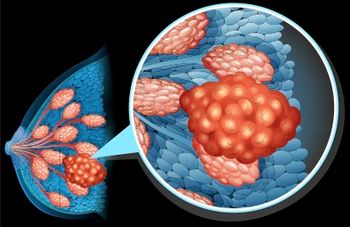
Traditional vs Targeted Chemotherapy in HER2-Positive Breast Cancer
Traditional neoadjuvant chemotherapy along with dual HER2-targeted blockade yielded significantly better response rates than a novel approach using HER2-targeted chemotherapy plus HER2-targeted blockade, according to a randomized phase III trial.
Traditional neoadjuvant chemotherapy along with dual HER2-targeted blockade yielded significantly better response rates than a novel approach using HER2-targeted chemotherapy plus HER2-targeted blockade, according to a randomized phase III trial.
“Despite the improvements in outcomes associated with HER2-directed therapy, approximately a quarter of patients who receive treatment for their early breast cancer remain at risk of relapse after 8–10 years, and around 15% will die within a decade,” wrote study authors led by Sara A. Hurvitz, MD, of the David Geffen School of Medicine at the University of California, Los Angeles. A need for new strategies in this setting led the investigators to test a neoadjuvant regimen of the antibody–drug conjugate trastuzumab emtansine along with pertuzumab in comparison with traditional systemic chemotherapy along with trastuzumab plus pertuzumab.
The KRISTINE trial included 444 patients with HER2-positive stage II–III breast cancer, randomized to receive either trastuzumab emtansine plus pertuzumab (223 patients) or docetaxel, carboplatin, and trastuzumab plus pertuzumab (221 patients). Patients had a median age of approximately 50 years, and most were stage IIA–IIIA (83%). The results were
The primary endpoint of pathologic complete response (pCR) was achieved in 99 patients in the trastuzumab emtansine group (44.4%), compared with 123 patients in the chemotherapy group (55.7%; P = .016). An exploratory multivariate analysis showed an odds ratio for achieving pCR with the trastuzumab emtansine regimen of 0.62 (95% CI, 0.42–0.93).
There were fewer grade 3/4 adverse events (AEs) in the trastuzumab emtansine group, at 13% compared with 64% of chemotherapy patients. The same was true of serious AEs, at 5% compared with 29%, and more chemotherapy patients (31%) than trastuzumab emtansine patients (11%) required a dose reduction.
The most common AEs leading to a dose reduction were laboratory anomalies in the trastuzumab emtansine group, while it was gastrointestinal AEs that led to more reductions in the chemotherapy group. In the trastuzumab emtansine group, 88% of patients had at least one AE, compared with 99% of chemotherapy patients.
“Collectively, these results support the neoadjuvant systemic chemotherapy regimen of docetaxel, carboplatin, and trastuzumab plus pertuzumab remaining as the standard of care, although less intensive therapeutic options, including therapy based on trastuzumab emtansine plus pertuzumab or the adjuvant paclitaxel and trastuzumab regimen, might be a suitable treatment option for patients unlikely to tolerate systemic taxane-based chemotherapy,” the authors concluded.
Newsletter
Stay up to date on recent advances in the multidisciplinary approach to cancer.


















































































